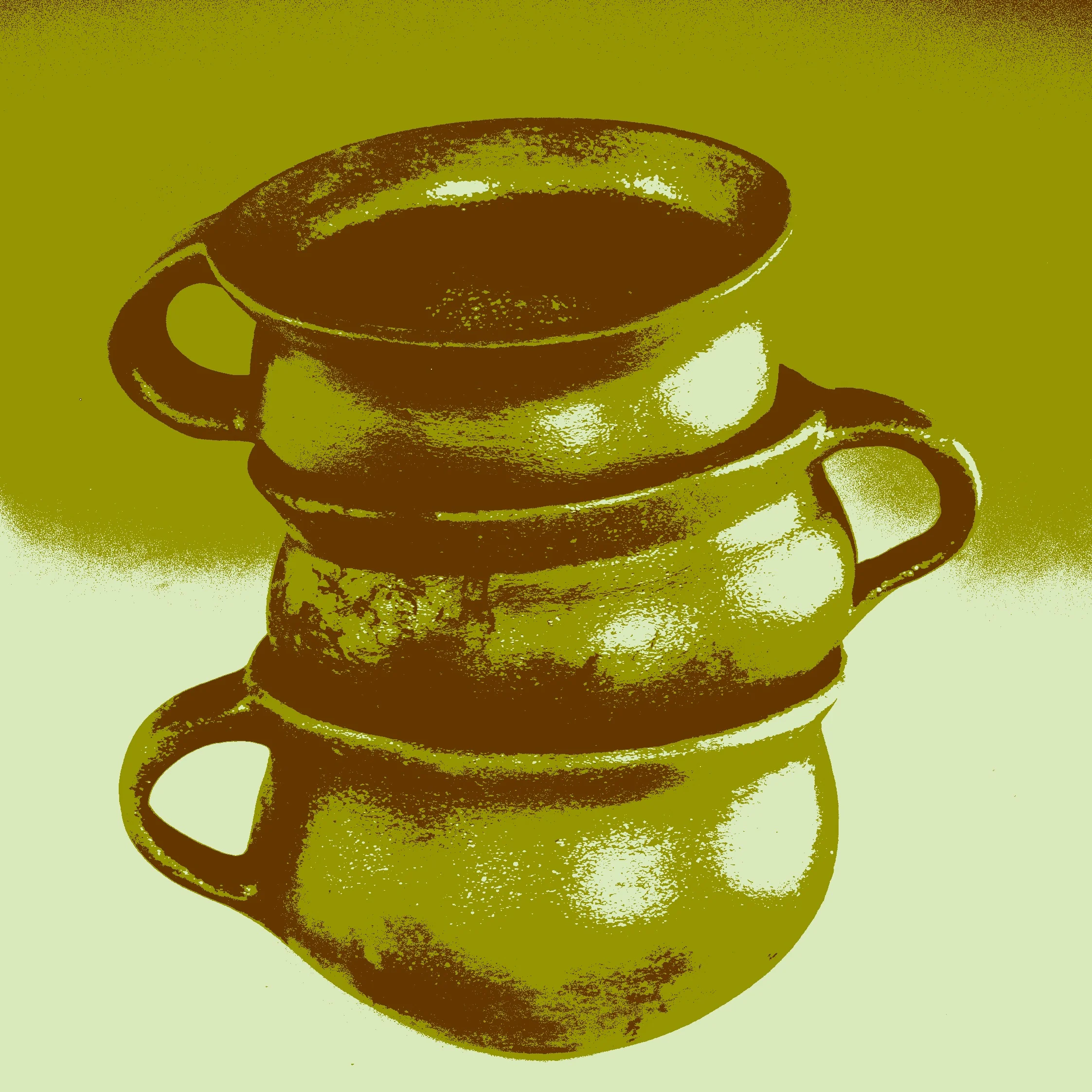Care of Micaceous Mugs
Micaceous pottery has been utilized in the southwest (and other parts of the world) for over 8 hundred years. It is a traditional style of pottery using the coil and scrape method. The mica content of micaceous clay is very high. Mica absorbs the thermal shock of being placed on a hot stovetop, allowing micaceous cookware to hold heat very well. Food will remain hot for several hours if left covered.
Lee’s micaceous mugs are made either by the traditional method or by wheel throwing, both using micaceous clay and traditional slip and firing methods.
PREPARING AND CARING FOR YOUR MICACEOUS MUG
Mugs have been tested by boiling water in them on the stovetop and checking for any leaks. You can extend the life of your mug by following the following guidelines:
Fill the mug with your favorite hot beverage and let sit for a short period then discard the beverage.
Repeat this step.
You are now ready to fill the mug and drink. You may notice the outside of the mug appears moist. This is natural, but let dry between uses. Repeated usage may change the color of the mug. They will become richer and more textured with use.
Clean mugs with warm water and a plastic scrub brush or sponge. Use mild soap or avoid soap use at all.
Avoid allowing water or beverage to sit in the mug (or the mug to sit in water) for extended time.
Care of Micaceous Pots
Micaceous pottery has been utilized in the southwest (and other parts of the world) for over 8 hundred years. It is a traditional style of pottery using the coil and scrape method. The mica content of micaceous clay is very high. Mica absorbs the thermal shock of being placed on a hot stovetop, allowing micaceous cookware to hold heat very well. Food will remain hot for several hours if left covered.
PREPARING AND CARING FOR YOUR MICACEOUS COOKWARE
Do not hesitate to cook in these pots since that is their intended function. You can extend the life of your pot by following the following guidelines:
Place the pot in the oven at 300 degrees.
When the pot is hot remove it and add oil (your favorite cooking oil) to the "inside" of the pot and let soak in.
Heat again and repeat the process until the pot will not absorb any more oil.
Wipe off the excess and you are ready to start cooking.
Avoid allowing water or food to sit in the pot (or the pot to sit in water) overnight or for extended periods of time.
Clean with warm water and a plastic scrubby or sponge. Avoid using soap if possible, or just use a minimum as the pots absorb the smell.
